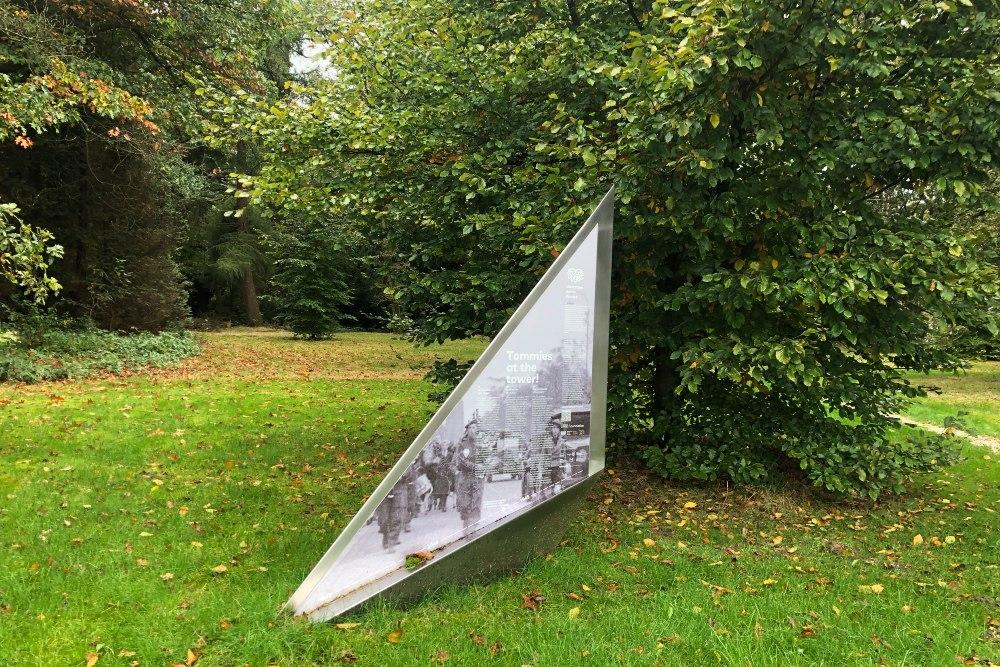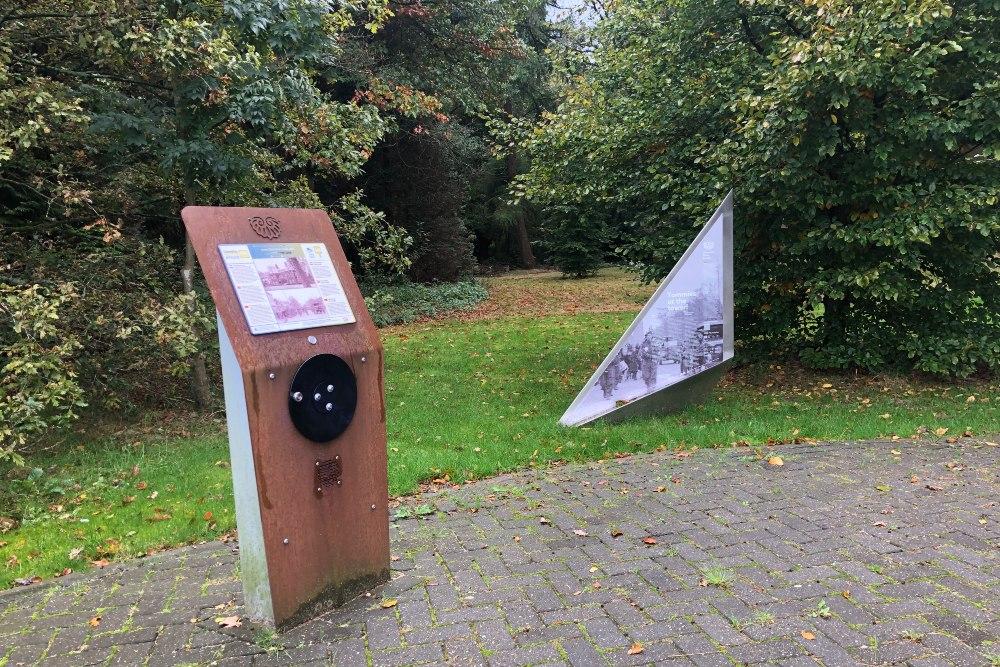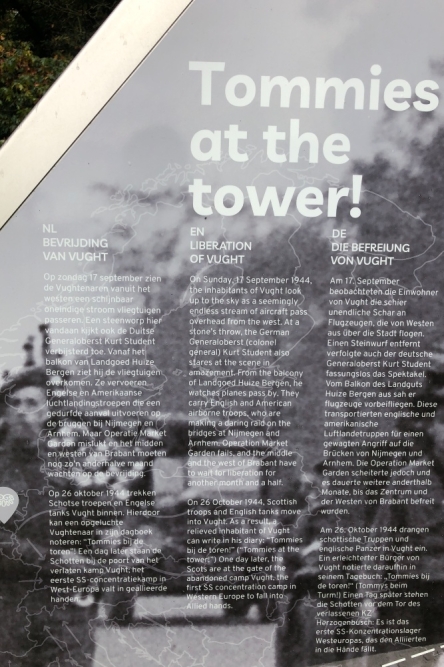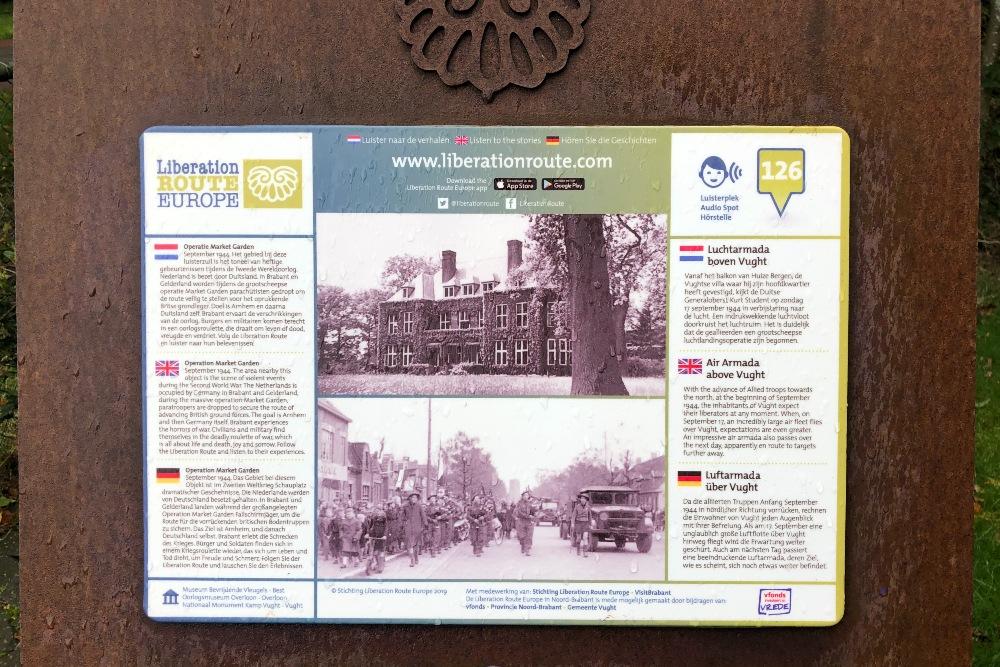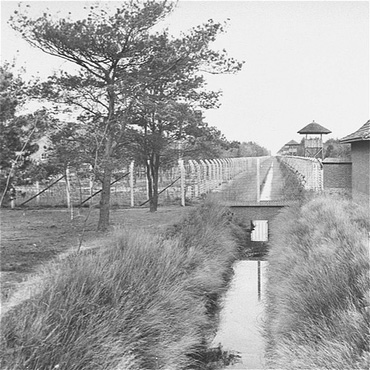Vector of Memory: Tommies at the tower
Tommies at the tower
On Sunday, 17 September 1944, the inhabitants of Vught look up to the sky filled with excitement and with their mouths open as a seemingly endless stream of aircraft pass overhead from the west.
At a stone’s throw, the German Generaloberst (colonel general) Kurt Student also stares at the scene in amazement. From the balcony of Huize Bergen, he watches the transport planes with their connected gliders pass by. They carry English and American airborne troops, who are making a daring raid on the bridges at Nijmegen and Arnhem. But “Market-Garden”, as the operation is called, fails, and the middle and the west of Brabant have to wait for liberation for another month and a half.
On 26 October 1944, Scottish troops from the Black Watch and the English tanks of the Northamptonshire Yeomanry move into Vught. In a combined attack they come from the direction of Halder, and a little later also from the direction of Boxtel. As a result, a relieved inhabitant of Vught can write in his diary: “Tommies bij de toren!” (“Tommies at the tower!”) One day later, the Scots are at the gate of the abandoned camp Vught, the first SS concentration camp in Western Europe to fall into Allied hands.
Audiospot - Air Armada above Vught
Liberation Route Europe is a certified Cultural Route of the Council of Europe. With hundreds of sites and stories in nine European countries, the route links the main regions along the advance of the Allied Forces in 1943-1945.
The entire route consists of themed routes that can be travelled by by hiking, walking, cycling and car. These routes pass numerous historical and interesting sites and tell stories from a multitude of perspectives that were important in the final phase of World War II.
A separate group within the routes are the Vectors of Memory designed by renowned architect Daniel Libeskind. They form a symbolic family of landmarks that honor people, places and stories in the European landscape. The vectors are a topography of memory. They act as points in both space and time and connect to the liberation story. It is important that the markers convey a clear and powerful message.
There are 4 types of vectors:
- The Remembrance Site Vector
- The Crossroads Vector
- The Wall Vector
- The Floor Vector
For more information on the Vectors of Memory see the Liberation Route Europe site: https://www.lre-foundation.org/vectors-of-memory/.
The routes can be found on the website of Liberation Route Europe or in the app through which many stories can also be listened to.
The routes can be found on the Liberation Route Europe website or in the app through which many stories can also be listened to.
Do you have more information about this location? Inform us!
Source
- Text: TracesOfWar & Liberation Route Europe
- Photos: Rob Vogels
Related books
Nearby
Museum
- Museum Military Cyclists Collection - Vught
- Geniemuseum (Museum of Military Engineering) Vught - Vught
- National Monument Camp Vught - Vught
Point of interest
Monument
- Memorial Mina Marx-Stibbe - Vught
- Sachsenhausen Memorial Reeburgpark Vught - Vught
- Vught Town Hall - Vught
Cemetery
- Dutch War Graves General Cemetery Vught - Vught
- Commonwealth War Graves Municipal Cemetery Vught - Vught
- Graves Veterans KNIL Municipal Cemetery Vught - Vught
Remembrance Stone
- Memorial Stone Boxtelseweg 4 - Vught
- Memorial Stone Maurick 1 - Vught
- Memorial Stone Van de Pollstraat 50 - Vught
Fortification
- Vughtse Lunette - Lunet VIII - Vught
- Vughtse Lunette - Lunet V - Vught
- Vughtse Lunette - Lunet IV - Vught
